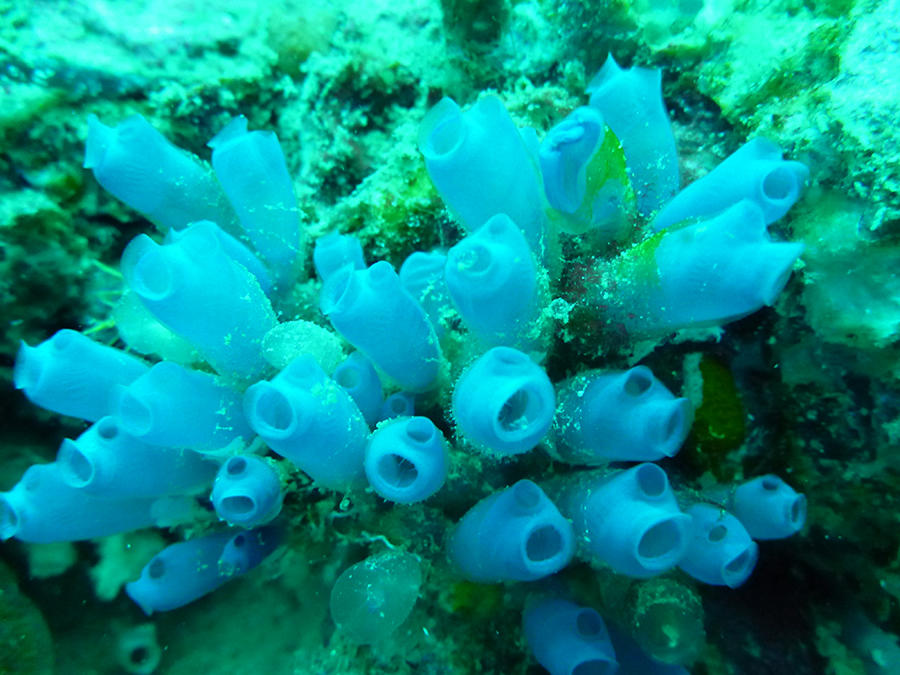
Published on August 3, 2019
Last updated on March 26, 2021
It’s monarch season.



Why do monarch caterpillars feast solely on milkweed?
Milkweed contains a class of compounds known as glycosides, which are poisonous to many animals. The monarch caterpillar sequesters (a fancy way of saying harvests and stores/builds up) these glycosides as a defense mechanism against predators. So, when some poor unsuspecting bird or lizard comes along and eats the caterpillar (or butterfly), then it will get very, very sick.
Monarchs aren’t the only species to use naturally occurring compounds as a defense mechanism. Various species of sea sponges, sea cucumbers, and even plants (milkweed, foxglove, etc.) either make or sequester incredibly toxic compounds to ward off animals that may try to eat them.
Believe it or not, many anti-cancer drugs were originally found in plants and invertebrates. Just take a look at the figure below to see some of the compounds which exhibit anti-cancer activity. ALL of these compounds were originally isolated from plants or animals, which means they’re all naturally occurring.
Even though these compounds kill cancer cells, normal cells often get harmed or destroyed as well by these toxic compounds (come on, none of us actually believe chemo is healthy for us, right? Just because chemotherapy drugs kill cancerous cells doesn’t mean they don’t harm us in the process).

 Extracts from Clavellina sp, a type of sea squirt or tunicate, are being studied for their potential to kill cancer cells. (Credit: National Cancer Institute)
Extracts from Clavellina sp, a type of sea squirt or tunicate, are being studied for their potential to kill cancer cells. (Credit: National Cancer Institute)
Hopefully, I’ve made this point: nature is a battlefield.
While we’ve been conditioned to believe that natural ingredients in skincare are synonymous with healthy ingredients to put on our skin (and in our bodies), that simply isn’t wholly true.
Let’s take a closer look starting with a big one.
Essential Oils
Many essential oils contain phototoxic or photosensitizing compounds (aka constituents). The compound, furanocoumarin (also written as furocoumarin, these terms are synonymous), is the most well-known of the potential phototoxic compounds found in some essential oils. Indeed, bergamot is typically processed further to remove furanocoumarins and then sold as Bergamot FCF (furanocoumarin free) essential oil.
How an essential oil is processed (steam distilled as in image below vs. cold pressed)
AND also which part of the plant is used to harvest the essential oil (for example leaf vs. blossom vs. fruit vs. peel) can also determine whether the essential oil contains any photosensitizing compounds. For example, most cold pressed citrus essential oils are photosensitizing, BUT those same citrus oils, when processed by steam distillation are NOT photosensitizing. Here’s a table to help show the difference.
|
Photosensitizing and/or Phototoxic |
Not Photosensitizing or Phototoxic |
|
Angelica Root (Angelica archangelica) |
|
|
Bergamot (Citrus bergamia, Citrus aurantium) |
Bergamot FCF (furanocoumarin free) |
|
Grapefruit (Citrus x paradisi) – from peel, cold pressed |
|
|
Lemon – cold pressed (Citrus x limon, Citrus limonum) |
|
|
Lime – cold pressed (Citrus x aurantifolia, Citrus x latifolia) |
Steam-distilled Lime Essential Oil (Citrus aurantifolia) |
|
|
Mandarin leaf (distilled) Citrus reticulata (Blanco) (mandarin leaf has a very low level of furocoumarins and IFRA does not give maximum use levels.) |
|
Orange, Bitter (Citrus aurantium) – fruit peel – different species than sweet orange |
Orange (Sweet) Essential Oil (Citrus sinensis) – fruit peel, different species than bitter orange |
|
Rue* (Ruta graveolens, Ruta montana) |
|
Okay, so we’ve made our point with essential oils, but what other natural ingredients commonly used in skincare products are bad for us?
Talc
Natural, but all too often contaminated with asbestos, also natural, a HUGE turnoff for us
Petroleum, mineral oil, etc.
Yeah, we’re going to keep moving. But, these ARE natural!
PABA (para-aminobenzoic acid)
Do you remember this once common sunscreen ingredient? Sorry millennials, I doubt if you do (yep, get ready for it… you’re too young 😊), but ask your parents, they’ll know. Well, PABA is naturally occurring. It has fallen out of favor because quite a number of people are allergic to it, it tends to be photosensitizing, and it’s been shown to penetrate the outer layer of skin – exactly what you want from ingredients like Vitamin C, resveratrol, peptides, and other actives, but not ideal for this particular ingredient.
You’re absolutely right! SO many amazing skincare ingredients ARE naturally occurring:
|
· Resveratrol |
· Argan Oil |
|
· Coenzyme Q10 |
· Olive Oil |
|
· Vitamin C |
· Meadowfoam Seed Oil |
|
· Vitamin E |
· Hyaluronic Acid |
|
· Azulene and Bisabolol (both anti-inflammatory compounds found in blue chamomile essential oil) |
|
However, the challenge is in retraining our brains to second guess whether a product or ingredient advertised as natural IS actually healthy for our skin. That’s where Rain Organica can help!
We’ve done the research for EVERY single ingredient we use (whether it occurs naturally or is a spin on a natural compound – think peptides shown to protect skin from sun damage or reverse the depth of wrinkles) to assess its safety so you can feel confident that you’re doing something good for your skin when you use our products.
References:
1 Lichota and K. Gwozdzinski. Review Article: Anticancer Activity of Natural Compounds from Plant and Marine Environment. International Journal of Molecular Sciences. Published: 09Nov18.2 https://www.ncbi.nlm.nih.gov/pubmed/15952931
3 https://www.cancer.gov/news-events/cancer-currents-blog/2019/cancer-drugs-natural-products-nci-program
4 https://www.adcreview.com/cytotoxic-agents/dolastatins-dolastatin-10-and-dolastatin-15/
5 http://info.achs.edu/blog/what-is-photosensitivity-with-essential-oils
6 M.F. Gurish, et al. The Effect of Various Sunscreen Agents on Skin Damage and the Induction of Tumor Susceptibility in Mice Subjected to UV Irradiation. Journal of Investigative Dermatology. Vol. 76 (No. 4). 1981.

About the Author
Brandy's a formulation scientist and self-proclaimed health geek who loves hiking, gardening, bird-watching, and body boarding.
Her struggle with acne during her teens and 20s led to a holistic and healthy approach to skincare, embracing skin as an organ to be loved and cared for rather than a canvas to wage war on.
Since 2008, she's been developing all-in-one products for a simple routine at home, & Rain Organica started when her backpacking friends asked for a portable skincare routine to keep their skin healthy & happy on and off the trails.
You can try Rain Organica for yourself with The Essentials Kit, a complete skincare routine in just 3 steps.
Subscribe to our newsletter:
